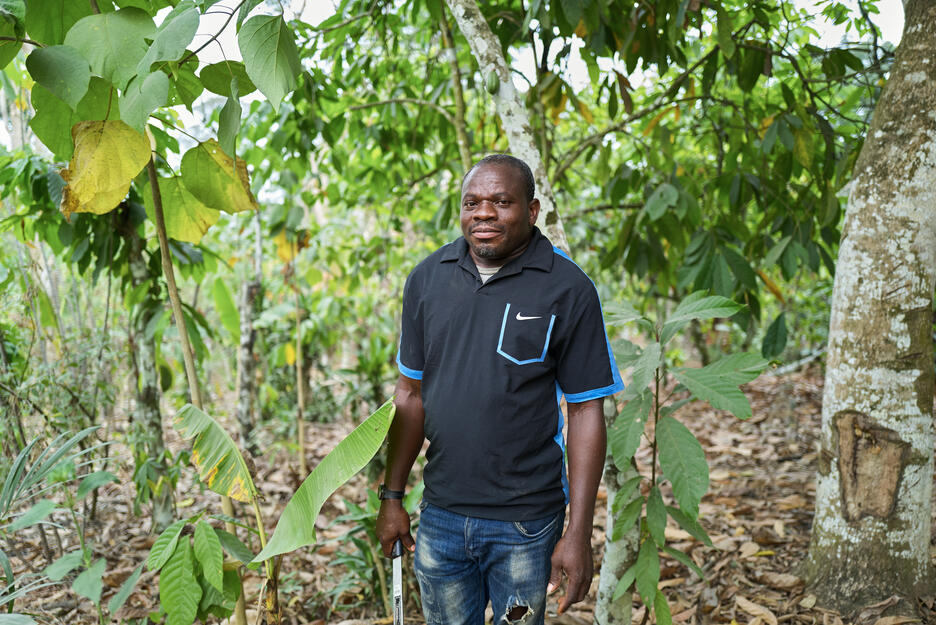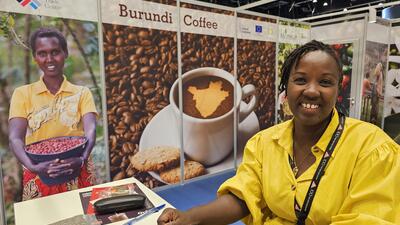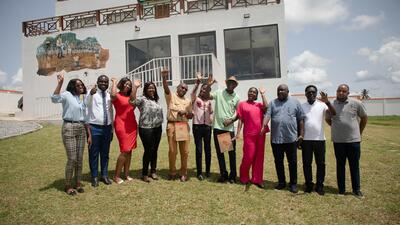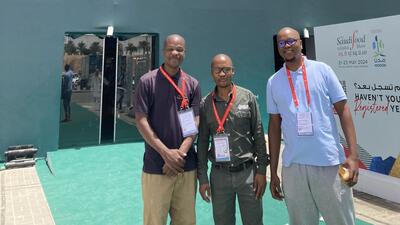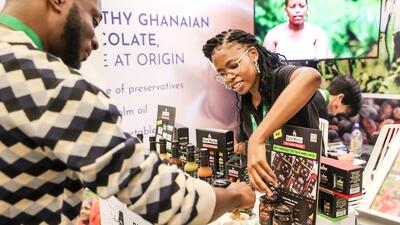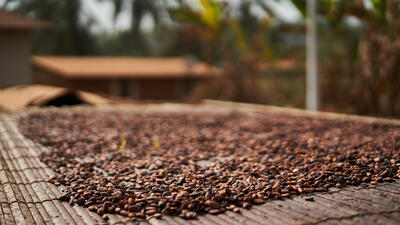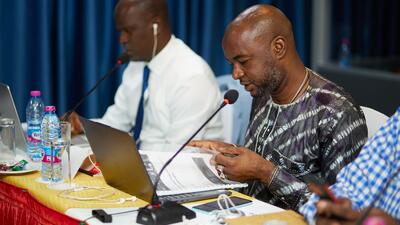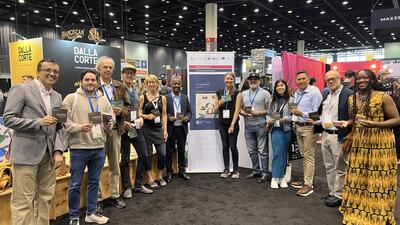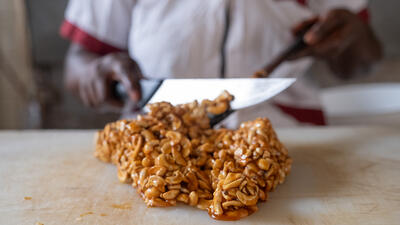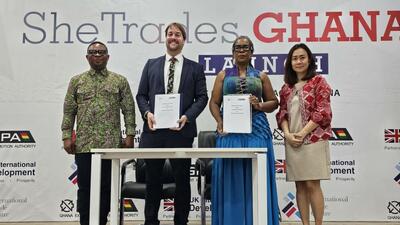
Dynamic agroforestry in Ghana. The answer to a cocoa sector in crisis?
The International Trade Centre (ITC) is working with partners in Ghana to boost cocoa production and improve the lives of farmers through dynamic agroforestry.
Cocoa prices are at a record high because of dwindling crops, making news headlines as a drop in global supply leaves one of the world’s most beloved products, chocolate, in a precarious position.
Why? Severe climate change effects have been drastically affecting crops in cocoa’s leading producing countries Côte d’Ivoire and Ghana, and farmer communities are feeling the impact.
When supplies drop, prices rise.
Cocoa bean prices have increased by more than 160% and almost 190%, respectively. This is affecting more than just the price of chocolate –cocoa farmers are struggling to earn a living while seeing their crops disappear at an alarming rate.
Ghana is looking for sustainable, long-term solutions. This is why ITC's Alliances for Action team is working with partners on a holistic approach that leverages dynamic agroforestry to heal environmental damage, restore crops, improve soil health, and offer new income streams.
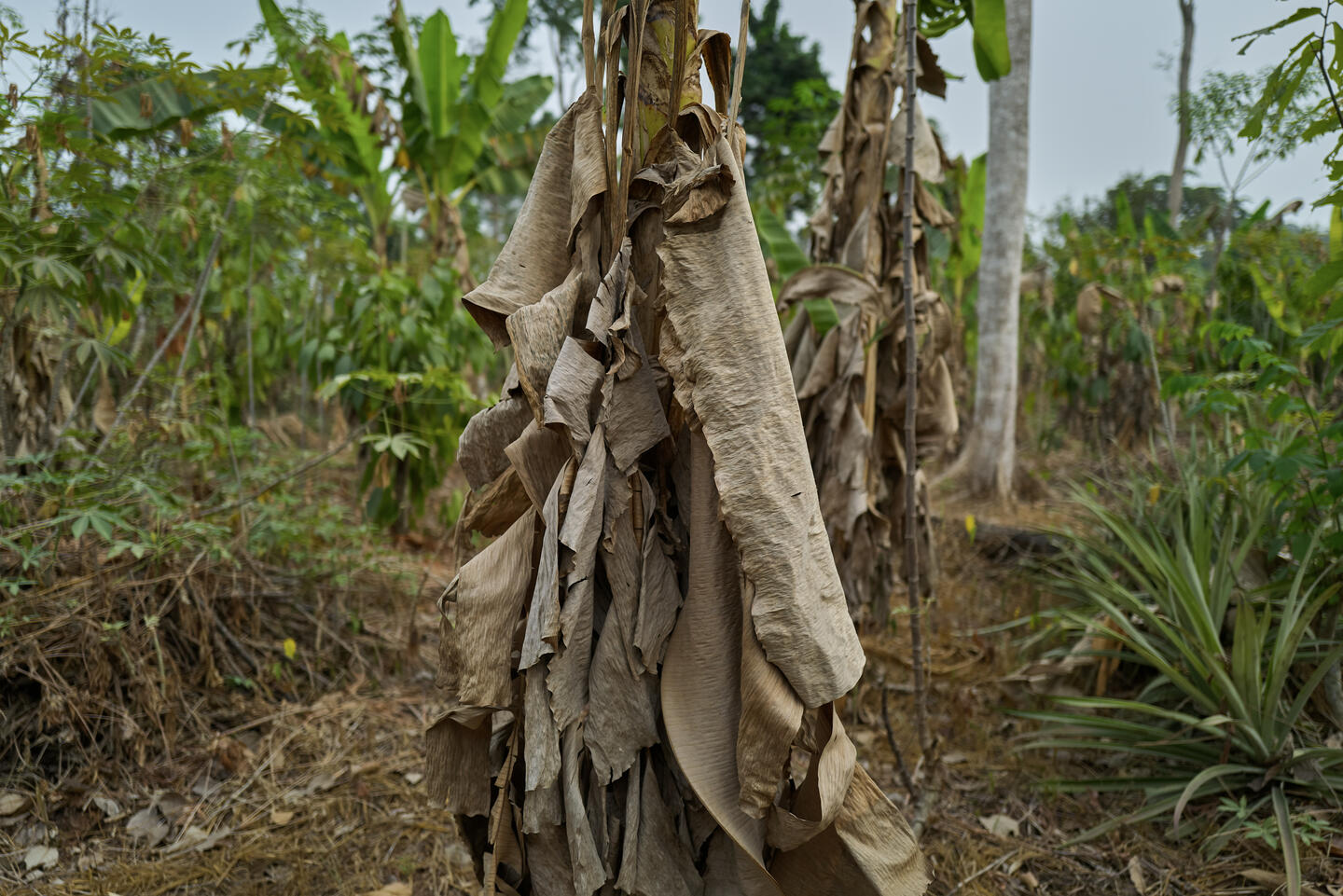
With more frequent heat waves, heavy rainfalls and droughts damaging harvests, the International Cocoa Organization stated in its recent monthly report that global cacao supply is anticipated to decline by almost 11% in the year following 2022-23. In Ghana, cocoa yields have been on the downward trend, offering little incentive to the almost one million smallholders who depend on it for their livelihood.
Other factors like unfavourable cocoa prices, lack of investment in the farms, the increasing incidence of cocoa diseases, and an average age of 60 years for cocoa farmers mean that a sustainable cocoa sector for Ghana remains doubtful unless critical steps are taken.
Typically, a ‘dynamic agroforestry’ cocoa plot sees cocoa, fruit trees, other subsistence crops and higher canopy trees – like timber – grow together. With different life cycles and height levels, they foster biodiversity in the agricultural production system. This creates a closed nutrient cycle that imitates natural forests and feeds into a healthy, balanced ecosystem.
In Ghana, farmers are struggling to keep their cocoa trees alive and dry their cocoa beans correctly because of global warming and unseasonal rains. Those who do manage to produce decent crops are often left without income in-between harvest seasons. Dynamic agroforestry helps them both in keeping up productivity and benefiting of other sources of income. The natural method is an additional low-cost bonus.
The Sankofa Project kicked off in 2019 as a pilot for study and replication by project partners including ITC, Swiss chocolate company HALBA, Fairtrade Max Havelaar, the World Wildlife Fund, and Fairtrade Africa.
With our Alliances for Action approach, it sought to address all the critical challenges outlined above by using dynamic agroforestry to rehabilitate the degraded cocoa farms of members of the Kuapa Cocoa Cooperative Farmers Union and Marketing Limited, targeting 400 farmers of their over 100,000 members.
The results have clearly underscored the potential of dynamic agroforestry. Today the pilot has given fresh impetus to sustainable cocoa production across Ghana, and Sankofa 2.0 kicked off in 2023. The Kuapa Cooperative is leading the effort, establishing a ‘Sankofa Centre of Excellence’ for lessons learned and digital data collection.
The goal? To impact all the Cooperative’s 100,000 members through access to finance (especially for women farmers and entrepreneurs) and embedding the project’s results and lessons within the broader cocoa landscape.

Sankofa’s central reforestation component serves as a good tool to accompany the upcoming European Union Deforestation Regulation. Two thousand cocoa, timber, biomass, and fruit trees planted per hectare will help restore a healthy production and regain some of the forest trees lost in Ghana’s cocoa production areas.
The EU Corporate Sustainability Due Diligence Directive imposes obligations on EU-based value chain actors to conduct due diligence on their supply chains. The Sankofa project prepares cocoa farmers for the upcoming implementation of this directive.
In addition, a critical challenge for cocoa rehabilitation is the farmers’ loss of income before the rehabilitated cocoa farms begin to yield. With seasonal crops year-round, including cash and subsistence crops like yam or maize, farmers can count on food security and extra income streams until the cocoa is ready to sell.
Finally, apart from reducing child labour, youth engagement in the cocoa sector is a priority. Meanwhile, the sale of surplus crops to the local market puts income directly into the hands of women, who traditionally manage this task.




